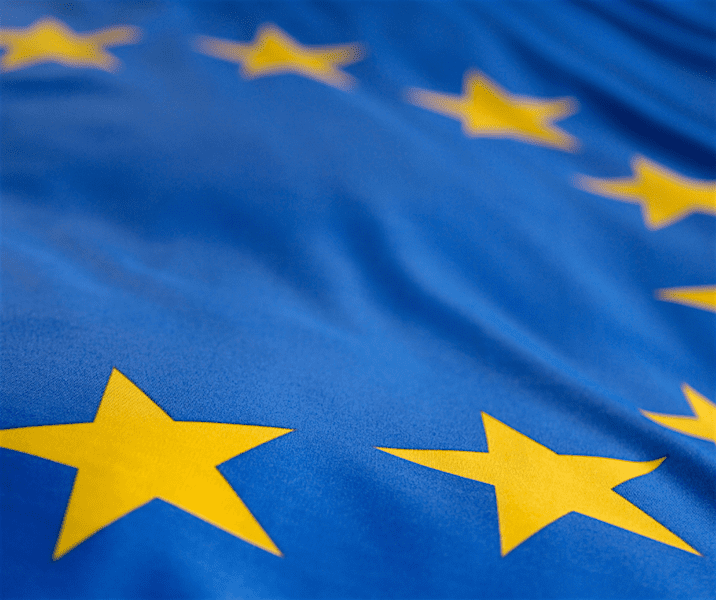
The European Aviation Safety Agency (EASA) issued a statement of clarification regarding its position on the Boeing 737 MAX’s return to service. Photo: EASA
On Sept. 27, the European Aviation Safety Agency (EASA) clarified statements it made that were recently published in an article by a publication called Flyers Rights about the process it is currently undergoing to investigate and review the certification and eventual return to service of the Boeing 737 MAX .
In the release, the agency notes that it provided written emailed responses to questions about the process and wanted to bring clarity to their 737 MAX investigation. Upon publishing the statement of clarification, the agency also noted its next milestones for the investigation include an upcoming week of flight testing on a modified 737 MAX flight simulator. The MAX remains grounded while accident investigators review the malfunctioning of the aircraft’s maneuvering characteristic augmentation system (MCAS) that lead to two separate Lion Air and Ethiopian Airlines crashes and killed a combined 346 passengers and flight crew.
“Aircraft longitudinal stability is subject to airworthiness requirements. Boeing has to demonstrate compliance of the 737 MAX airframe with these requirements. Consequences of failures of systems affecting potentially the aircraft stability need to be assessed using acceptable safety analysis methodology also subject to airworthiness requirements,” EASA said in its published statement.
The agency declined to comment on several aspects of the ongoing investigation, including the level of delegation granted by the FAA to Boeing in certification of the 737 MAX and the possibility of necessitating hardware changes, aircraft redesign or pilot re-training on full-motion flight simulators in order to return the global fleet of MAX aircraft to service that have been grounded since March.
Flight and simulator evaluation by EASA officials occurred in June and July, with the statement noting that evaluation resulted in “70 test points to be evaluated covering both normal and abnormal operations.”
“In the case of the B737 max, our review of pilot training requirements is not completed yet and we have not reached a conclusion yet on that matter,” EASA said.

Boeing 737 MAX cockpit. Photo: Boeing
The clarification from EASA comes as newly appointed FAA Administrator Stephen Dickson traveled to Montreal for a Boeing 737 MAX status meeting with civil aviation regulatory agencies from other countries. In a speech at the meeting, Dickson openly acknowledged the international scrutiny the agency has faced relating to its approach to oversight of commercial aircraft certification and welcomed feedback from other countries about that process.
“As you make your own decisions about returning the MAX to service, we will continue to make available to you all that we have learned, all that we have done, and all of our assistance,” Dickson said.
In an emailed statement to Avionics International, Lynn Lunsford, a representative for the FAA said that the agency was attending the conference in Montreal to discuss the most recent revisions to “discuss the most recent revisions to the Boeing software, as well as the regulators’ joint efforts to get the answers they need from Boeing to satisfy their various concerns.”
Lunsford said the agency is staying away from speculating on the 737 MAX’s return to service.
“We have steadfastly stayed away from speculating about a timeline for return to service. It will be ready when it’s ready,” Lunsford said.
Top FAA officials addressed criticism of the agency’s certification process for the 737 MAX during a Senate Appropriations subcommittee hearing in July, admitting that there should have been a better description of the aircraft’s MCAS system in the required computer-based pilot training.
EASA is one of the civil aviation regulatory agencies represented on the Joint Authorities Technical Review (JATR) group, lead by former National Transportation Safety Board (NTSB) Chairman Christopher Hart, was also established by the FAA specifically to conduct a review of the certification of the 737 MAX’s automated flight control system. JATR includes experts from NASA and the civil aviation regulatory agencies of Australia, Brazil, Canada, China, Indonesia, Japan, Singapore, and the United Arab Emirates, in addition to EASA.
Boeing’s latest organizational activity related to the 737 MAX grounding includes a statement on Sept. 25 published to a special section of its website dedicated to the aircraft describing the creation of a permanent Aerospace Safety Committee of the Board of Directors. Adm. Edmund Giambastiani, Jr., (Ret.), former vice chairman, U.S. Joint Chiefs of Staff, and a career nuclear-trained submarine officer is serving as the chairman of the committee.
The committee’s primary responsibility is to “oversee and ensure the safe design, development, manufacture, production, operation, maintenance and delivery of the company’s aerospace products and services,” according to Boeing.